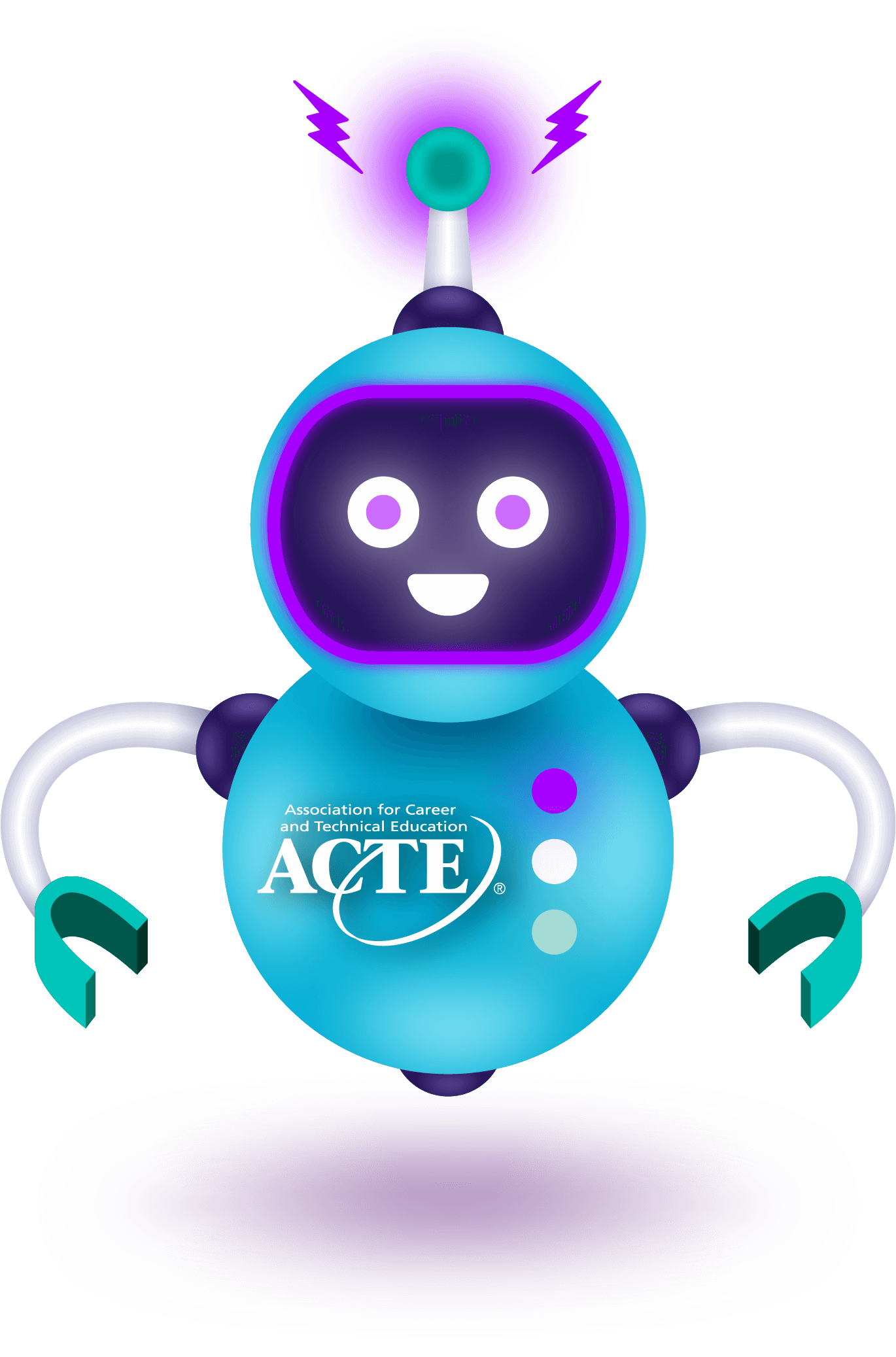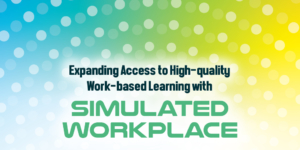“Expanding access to high-quality work-based learning with Simulated Workplace” appears in its entirety in Techniques’ November/December 2021 print issue.
“Great meeting today. Let’s discuss ideas for our engine challenge tomorrow morning, after our safety data updates. Thanks everyone for your attention.” Jake then gathered up the meeting’s paperwork and moved with confidence toward his company’s tool area to prepare for the day’s projects. You may wonder… What company does Jake work for? What is his position? Where is his company located? What engines do they produce?’
Jake is a secondary student of career and technical education (CTE).
Many students like Jake engage in job roles with real systems of accountability in authentic workplace environments, all while still enrolled in public education. This innovative approach to education, Simulated Workplace, has served students across the nation and internationally since its founding in 2013 by Kathy J. D’Antoni, former assistant superintendent for technical and adult education at the West Virginia Department of Education.
The Strengthening Career and Technical Education for the 21st Century Act, known as Perkins V, expects that work-based learning (WBL) will be incorporated as part of all students’ career pathway programs. However, ensuring equitable access to high-quality WBL opportunities can be difficult for many CTE educators, especially those in communities who face geographic, economic, social and/or cultural barriers to access. West Virginia’s preponderance of rural schools made statewide access to WBL particularly challenging, but it also presented a call for innovation.
Simulated Workplace was created to design environments in which all CTE students can learn about workplace cultures, parameters and practices.
Simulated Workplace seeks to transform CTE classrooms or labs into high-quality business and industry learing environments. The model creates opportunities for students to work in real school-based businesses to solve problems, set goals, collaborate, manage workplace challenges, and communicate in teams while developing technical and academic skills and knowledge. CTE classrooms or labs become job sites in which students take on safety management, quality assurance, human resources and more. Students apply to a program — otherwise known as a com- pany — and receive guidance from local business and industry partners as well as their teacher, who often acts as the company’s CEO.
Twelve essential protocols structure the work:
- Student-led Companies
- Application and Interview Structure
- Formal Attendance System
- Drug-free Work Zones
- 6S Environment
- Safe Work Areas
- Workplace Teams
- Project-based Learning (PBL) and Student Engagement
- Company Name and Handbook
- Company Meetings
- On-site Business Review
- Accountability
How does the Simulated Workplace expand access to WBL?
In Simulated Workplace environments, students take responsibility for their own learning. Students apply and interview for relevant positions, a process through which they gain firsthand experience of human resources procedures. They also benefit from practice pitching themselves to an employer. As CEOs, CTE teachers often rotate students through jobs, using the application and interview process to facilitate learning. Students may experience what it’s like to be fired and rehired for various jobs or roles — which can help them better understand workplace expectations and the responsibilities that come with authority.
Protocols for project-based learning, teamwork, company meetings and an emphasis on organizing for productivity using lean manufacturing methodologies help bring additional relevance to Simulated Workplace classrooms. Workplace attendance, project completion, and industry credentials and certifications are used to measure employees’ success.
Company safety standards are upheld by student safety managers. They are responsible for ensuring their workspaces follow Occupational Safety and Health Administration or other industry-recognized safety guidelines. Simulated Workplace projects may occur across various shifts of employees, giving students opportunities to solve communication and project management challenges.
This structure allows fewer business leaders to serve larger numbers of students — a boon in rural or industry-sparse communities.

How can I implement Simulated Workplace?
The Southern Regional Education Board (SREB) collaborated with state, district and local leaders to develop Simulated Workplace initiatives nationwide. Most teachers find it challenging to shift from providing direct instruction to facilitating a company in their classrooms or labs. SREB consultants offer professional development and coaching that helps teachers phase in the 12 protocols over time. We’ve learned three critical lessons about what it takes to successfully make this cultural shift:
Project-based instruction is key.
SREB begins by helping teachers learn and use industry-appropriate problem-solving processes as they gradually make the shift to authentic project- and problem-based learning. We recommend phasing in PBL over a three-year period of ongoing professional learning.
On-site inspections generate valuable feedback, not only for the teachers and students who run Simulated Work- place companies, but also for state, district and school leaders.
In Alabama, SREB modified West Virginia’s business and industry inspection instrument and developed a separate walk- through inspection instrument for teachers and school leaders to use. Instruments like these can help states, districts and schools gather the data they need to design effective professional development on the creation and maintenance of Simulated Workplaces.
Existing CTE advisory committee members make great business and industry advisors.
SREB has helped schools and tech centers better engage their advisory committees in actively supporting Simulated Workplace.
Make Simulated Workplace work for your students.
Let’s go back to Jake. He runs company meetings at which he takes accountability for his own, his colleagues’ and his company’s success. Jake has held several positions within his company that will help guide him in the future. Simulated Workplace provides a way for more students like Jake to gain workplace skills and experiences. Simulated Workplace offers a great tool for increasing access to quality work-based learning opportunities in any school.
Linda Floyd, Ed.D, is program director of Technology Centers That Work at the Southern Regional Education Board.
Kathleen McNally, Ph.D., is a senior school improvement instructional coach at SREB.








